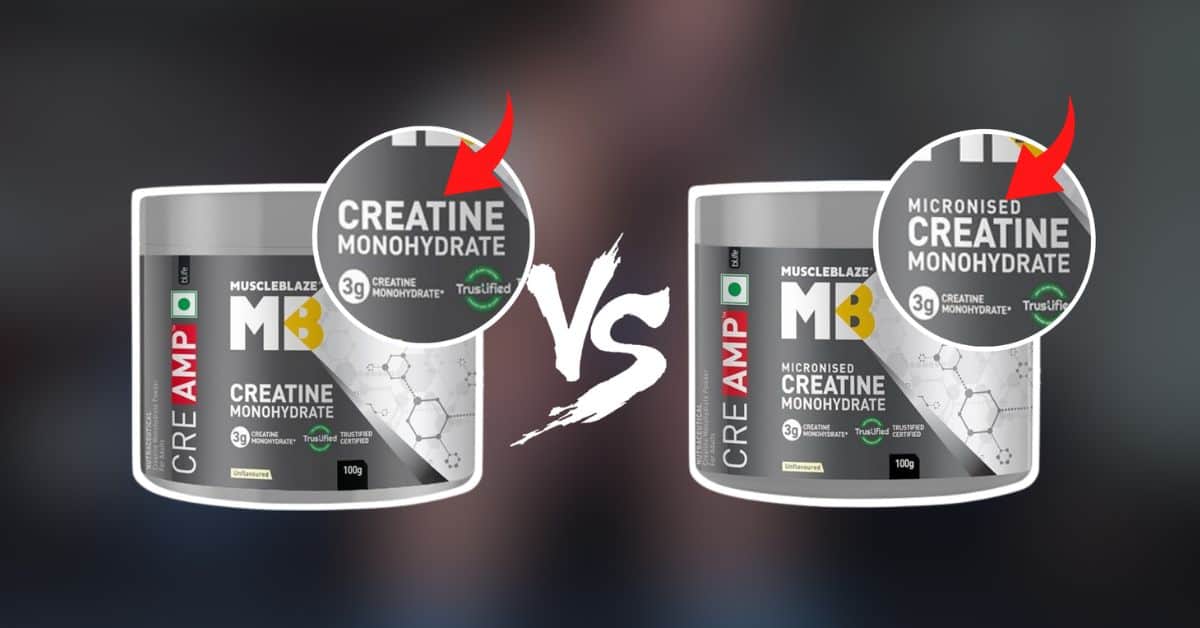Creatine Monohydrate vs Micronized Creatine Monohydrate
Creatine is one of the most popular and extensively studied supplements in the fitness world. It has been shown to enhance muscle strength, increase exercise performance, and improve overall muscle growth. The two main types of creatine available in the market are creatine monohydrate and micronized creatine monohydrate. While they both serve the same purpose, there are subtle differences between the two, primarily in terms of particle size, solubility, and absorption.
Creatine Monohydrate: The Standard
Creatine monohydrate is the original and most researched form of creatine. It consists of creatine bound to a water molecule and is typically available as a powder that can be mixed with water or other liquids.
- Particle Size: Regular creatine monohydrate comes in relatively large particle sizes, which can affect how well it dissolves in liquids.
- Solubility: Due to its larger particle size, creatine monohydrate doesn’t dissolve as easily in water or other drinks. This can sometimes lead to a gritty texture when consumed and may leave residue at the bottom of the glass. However, the effectiveness of creatine is not diminished by its solubility.
- Absorption and Digestibility: Creatine monohydrate is highly effective and is known to increase the body’s stores of phosphocreatine, which helps regenerate ATP, the energy currency of the cells. However, some users report mild gastrointestinal discomfort, bloating, or water retention when using regular creatine monohydrate. While this is relatively uncommon, it can affect user experience.
- Cost: One of the main advantages of creatine monohydrate is its affordability. It is widely available and typically costs less than other forms of creatine. This makes it a popular choice for individuals looking to enhance their athletic performance without spending too much.
Micronized Creatine Monohydrate: A Finer Alternative
Micronized creatine monohydrate is essentially the same compound as regular creatine monohydrate but with one key difference: the particle size. The creatine is processed to break down the particles into much smaller sizes, which can have certain advantages.
- Particle Size: The smaller particle size of micronized creatine makes it more efficient in terms of solubility and absorption. It is around 20 times smaller than regular creatine monohydrate, which makes it easier to mix into liquids.
- Solubility: Due to its smaller particles, micronized creatine dissolves more easily in water or other beverages. This eliminates the gritty texture that can sometimes be associated with regular creatine and ensures that there’s no residue left behind in the glass. For people who prefer smooth drinks or those who mix creatine with other supplements, this can be a significant benefit.
- Absorption and Digestibility: The enhanced solubility of micronized creatine may lead to slightly better absorption rates. Additionally, many users report fewer digestive issues when using micronized creatine, as it is generally easier on the stomach and may reduce bloating and water retention. This is particularly useful for individuals who are sensitive to regular creatine.
- Cost: Micronized creatine is generally more expensive than regular creatine monohydrate due to the additional processing required to create the smaller particles. For some users, the benefits in terms of solubility and comfort justify the extra cost.
Effectiveness and Performance
In terms of effectiveness, both creatine monohydrate and micronized creatine monohydrate are virtually identical. Both forms work to increase the body’s creatine stores, enhance ATP production, and improve muscle strength, endurance, and growth. Numerous studies have shown that creatine supplementation, regardless of the form, can significantly boost performance in high-intensity exercises, such as weightlifting and sprinting.
However, because micronized creatine is easier to dissolve and may be gentler on the stomach, it can provide a more enjoyable user experience for those who have had issues with regular creatine. This difference in comfort can influence individual preferences when it comes to long-term supplementation.
# Debunking Creatine Myths: The Truth Behind This Popular Supplement
Conclusion: Which Should You Choose?
The choice between creatine monohydrate and micronized creatine monohydrate depends largely on your personal preferences and needs. If you’re looking for an affordable, well-researched supplement that can improve your athletic performance, regular creatine monohydrate is an excellent choice. It’s cost-effective and proven to work.
On the other hand, if you’ve experienced digestive discomfort or find that regular creatine doesn’t mix well in your drinks, micronized creatine might be worth the extra investment. It offers the same benefits as creatine monohydrate but with improved solubility and potentially fewer side effects.
Ultimately, both forms will help you achieve your fitness goals by supporting muscle growth, increasing strength, and boosting your overall performance in high-intensity activities.



